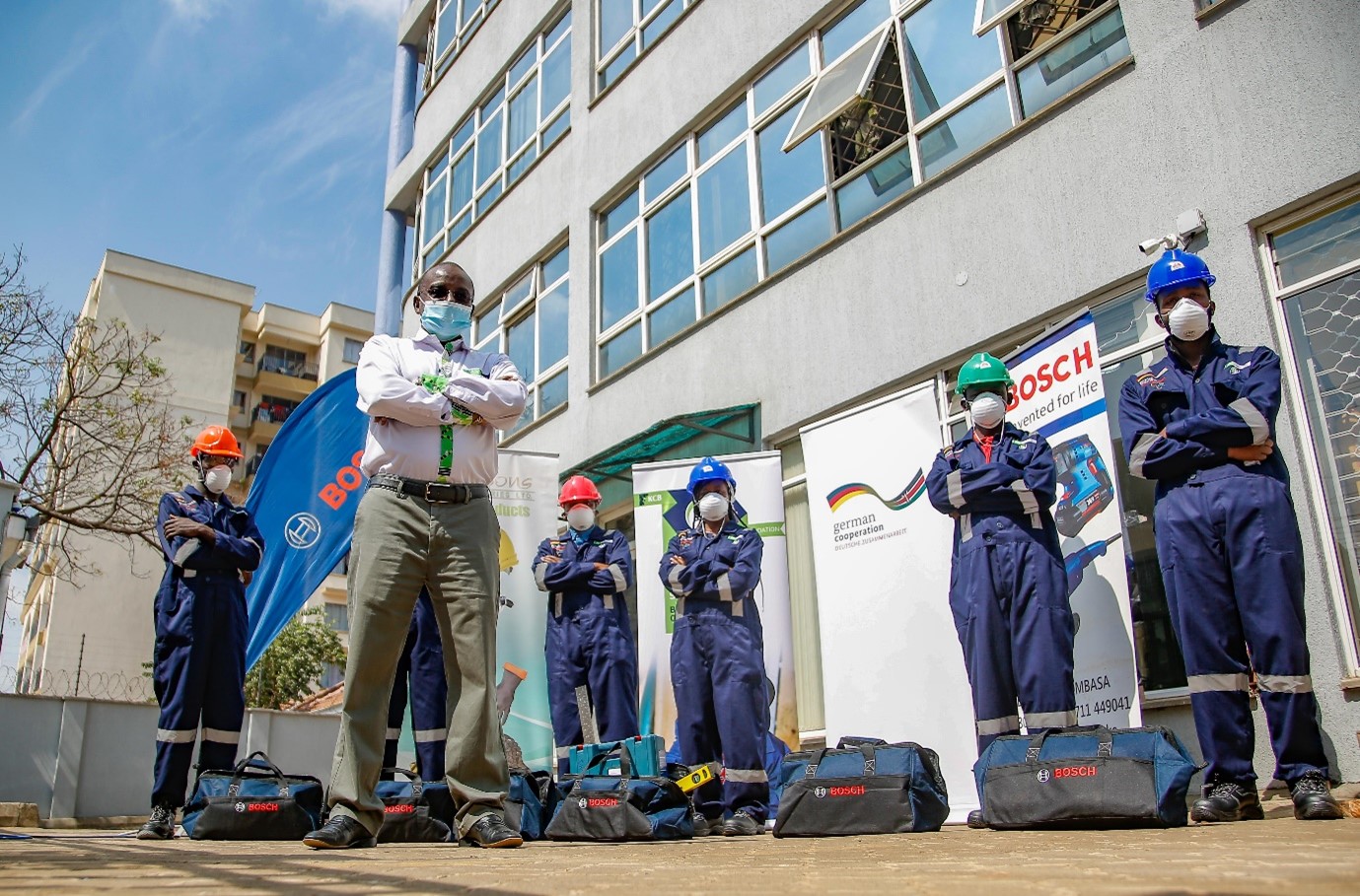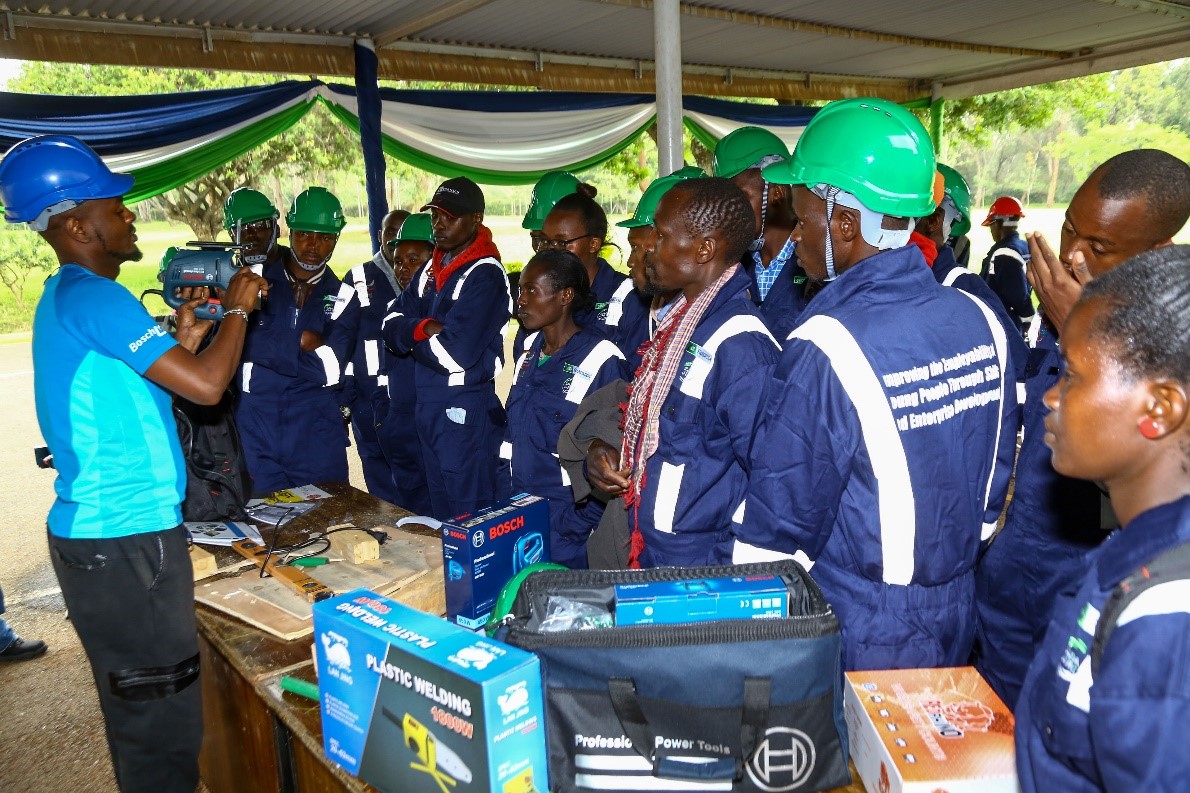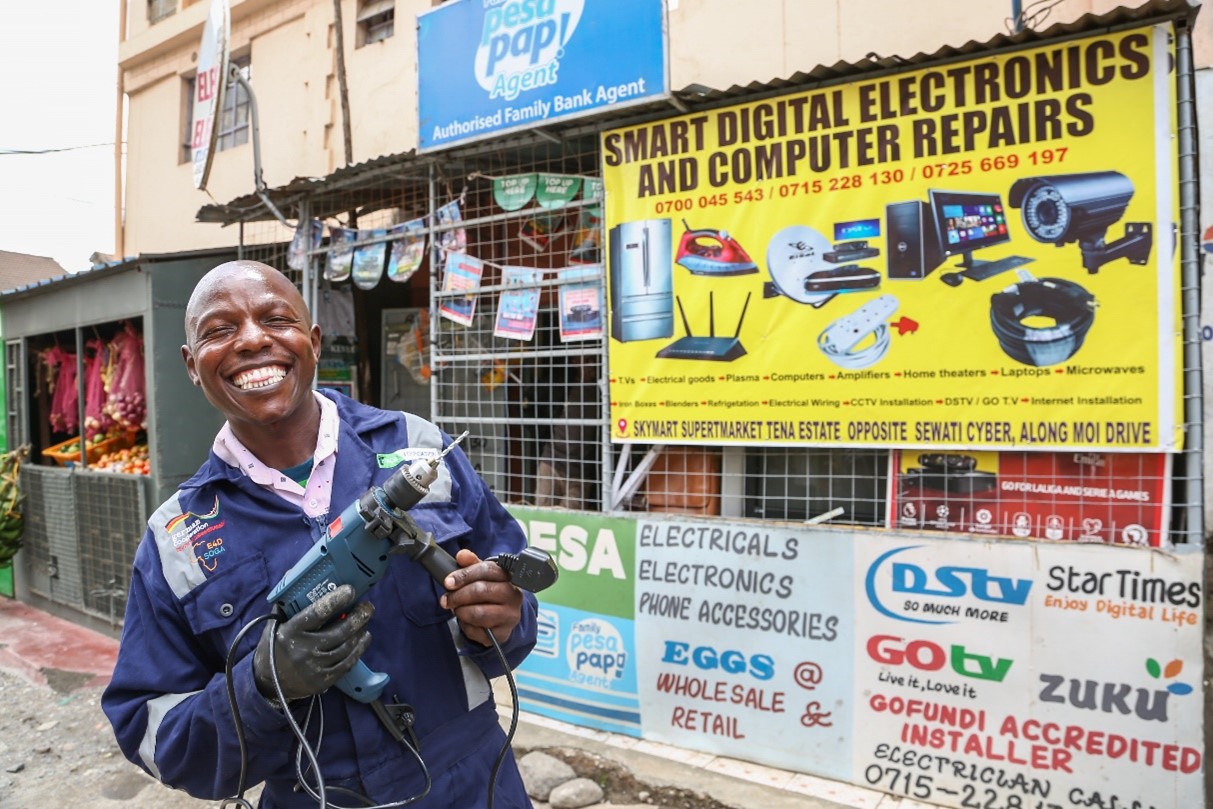
Improving the employability of young people from the construction sector in Kenya through skills and enterprise development.
Kenya Commercial Bank Foundation (KCBF)/GIZ, Kenya
Countries of implementation: Kenya, Second phase: Uganda and Tanzania
Overview
Capital injections by the government of Kenya into mega infrastructure projects have contributed to construction being among the best performing sectors in the country, projected to grow at an average of 16% over the next five years.
Unskilled and semi-skilled labourers make up 75% of Kenya’s labour force in the construction sector, according to the 2014 National Construction Industry Survey of 2014 . The industry experiences skills shortages in key areas such as plumbing, electrical, masonry, paint works, welding and carpentry. The survey thus identified a need for specific training courses for skilling and upskilling of semi-skilled and unskilled construction workers.
To address the skills gap and empower construction workers, the project has provided demand driven skill courses. The objective was to provide training for skilled and semi-skilled construction workers, of whom were intended to be women.
The project is a 50/50 partnership between the Kenya Commercial Bank Foundation (KCBF) and German Development Cooperation (GIZ). It is being implemented in two phases: July 2017 to November 2019, and May 2021 to August 2023. The second phase includes Uganda and Tanzania.
Good Practice Approach
Each training cohort took six months and consisted of three months’ classroom instruction, and three months’ industrial attachment with practical experience, to address skills gaps. The building and construction courses included masonry and brickwork, carpentry and joinery, plumbing and pipe fitting, electrical installation, welding and metalwork, roofing, painting and tile laying. The trainees were then funnelled into job opportunities. Those interested in establishing their own micro-enterprises were supported by Business Development Services (BDS), equipped with trade-specific construction starter toolkits, and provided with start-up and working capital by KCB Foundation. Training by BDS entailed hands-on support in accounting, bookkeeping, business law, marketing and development of business plans. Beneficiaries were assisted to open bank accounts. The beneficiaries were also assisted to enter into sub-contracts for the construction of greenhouses under another programme funded by Mastercard Foundation.
Regional launch events were held in Meru, Kisumu and Mombasa, during which county governors pledged to provide self-employment and sub-contract opportunities for the local beneficiaries in their county government funded construction projects. The beneficiaries were registered for prequalification under the Access to Kenya Government Procurement Opportunities for Youth, Women and Persons with Disability (AGPO), a national programme of the Kenyan government. Overall, the handover events enhanced the employability and increased income generation of the beneficiaries by connecting them to ongoing construction projects.
Toolkit suppliers, BOSCH and Alibhai Shariff, conducted on-site practical training on the power tools for beneficiaries. All 580 toolkit beneficiaries were invited to apply for employment opportunities at the proposed 28 000 greenhouses located at 560 hydroponic farms countrywide over the next five years.
Key Results
Results of the first phase are:
• 2 896 beneficiaries trained in carpentry and joinery, electrical installation, masonry and brickwork, plumbing and pipe work, welding and metalwork, tile laying and painting.
• The procurement of construction starter toolkits from BOSCH, distributed to 580 (20%) beneficiaries.
• KES 5 147 795/35 loaned as working capital to 22 beneficiaries. Individual loans ranged from KES 100 000 to KES 600 000.
• As at the end of implementation 1 859 people, of whom 191 were women and 1 288 men, were in employment.
• 3 973 beneficiaries were integrated into the formal financial services system.
• 2 605 beneficiaries graduated from personal consumers to the business category of KCB.
• The 580 toolkit beneficiaries registered their business enterprises.
• As of January 2020, 184 toolkit beneficiaries had been engaged to construct infrastructure at the hydroponics farms and the assembly of greenhouses, the result of a linkage with a training institution, Arc Skills.
Lessons Learnt
Success Factors
Successes of the project included support and buy-in from county governments in the form of commitments to the employment of graduates. This is crucial in a country in which the construction sector makes an important contribution to GDP. Linkages with various private and public sector projects played a role in securing employment for graduates. The strong partnership between KCBF and GIZ enabled additional features such as business development training, while the procurement of toolkits increased the employment potential of trainees.
Challenges/Barriers
Some trades, such as electrical and plumbing, proved more popular than others. This created difficulties in matching the training provided to the identified needs of the construction sector. The project was not able to meet its objectives in the participation of women. Other challenges were drop-outs and resignation of beneficiaries during training, and managing relationships between trainees and various partners.
3. Moving Forward
In phase 2, the project has increased its objectives to 3 500 trainees, 700 toolkits and 473 interest-free loans. An additional objective is to increase the participation of women to 40% of trainees.
The project is giving attention to the challenge identified in phase 1 of balancing the need for demand-driven skill training.
Resources






